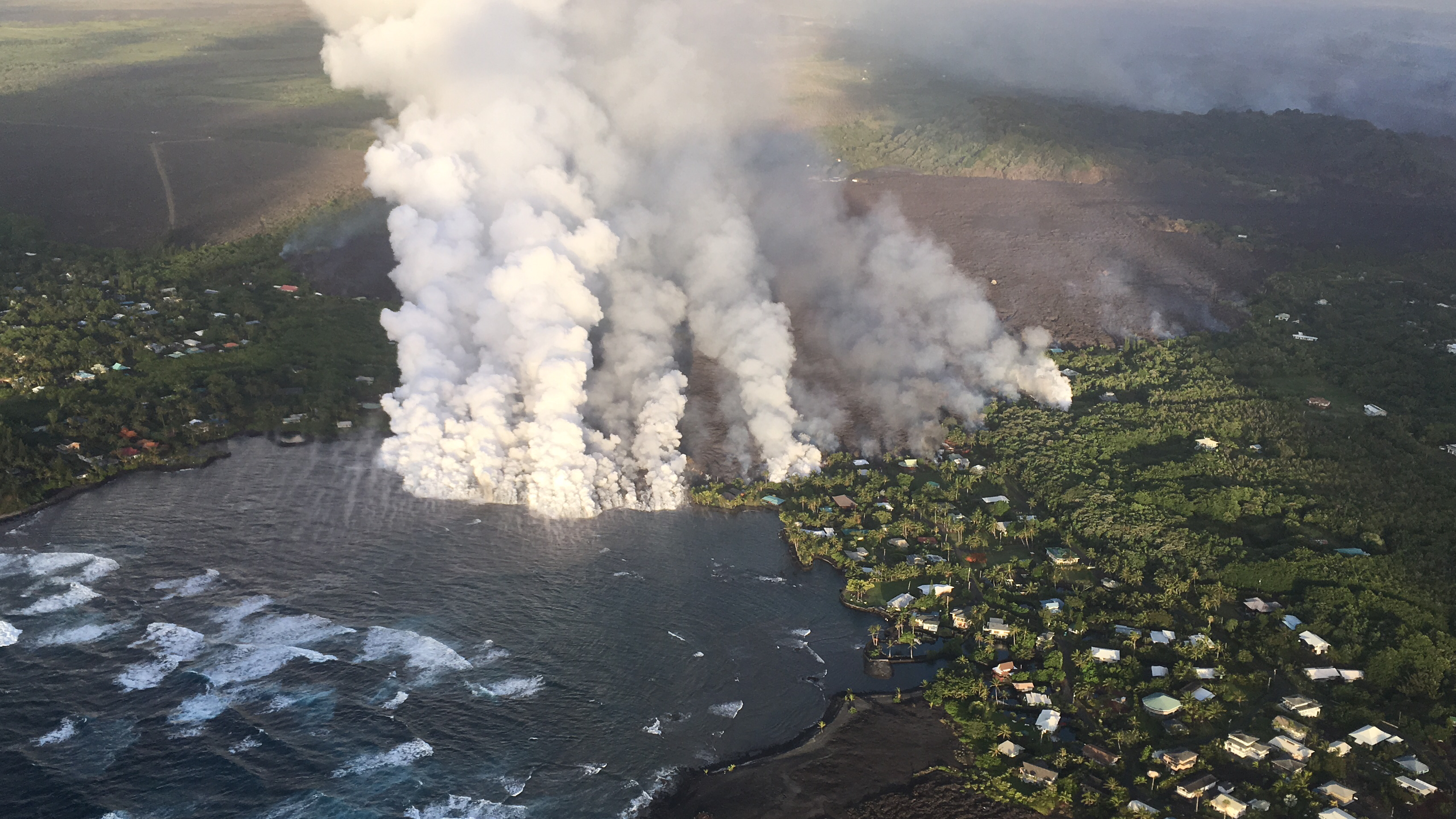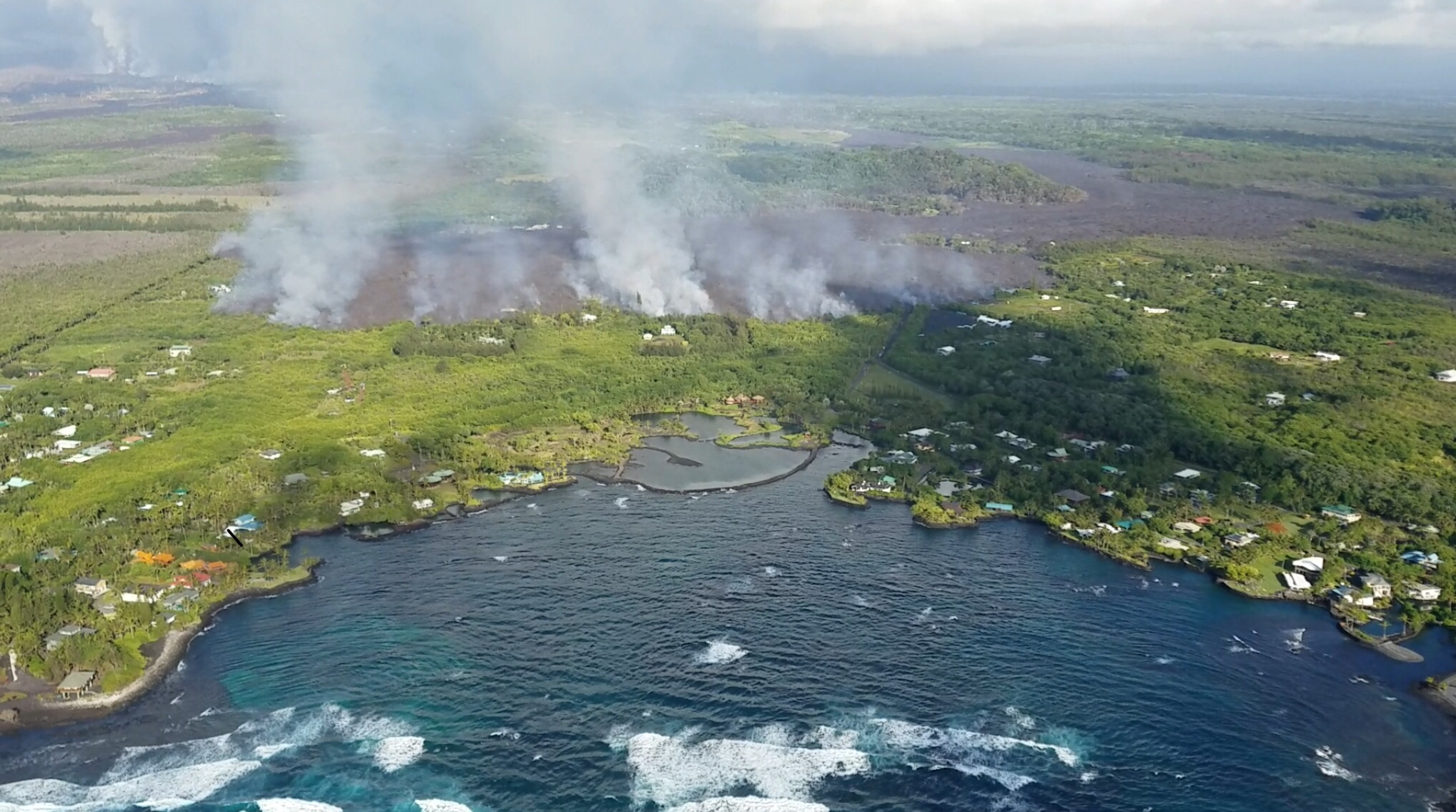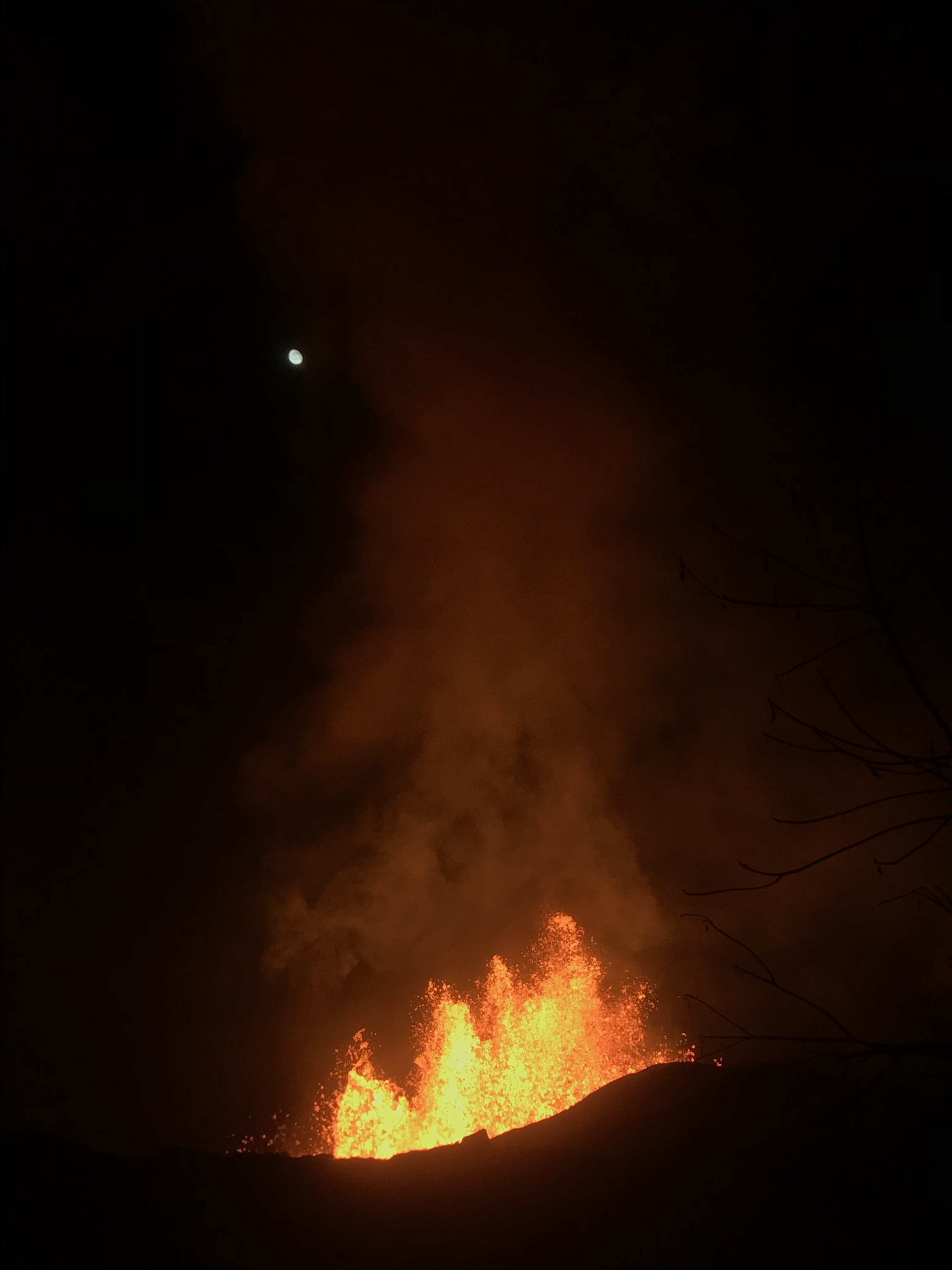Laze Hazard: Ocean Entry Plume at Kapoho Laden with Hydrochloric Acid

Overflight photograph at approximately 6:13 a.m. on Monday, June 4, 2018, shows the lava flow originating from Fissure 8 (not visible in photograph) entering Kapoho Bay. The ocean entry was reported to have occurred by 10:30 p.m. on the night of June 3, 2018. PC: US Geological Survey
The Hawaiʻi County Civil Defense Agency is asking the public in the volcano eruption zone to be aware of the laze hazard at the lava ocean entry point at Kapoho Bay.
The Hawaiian Volcano Observatory reports that the lava entered the ocean at Kapoho Bay last night and is from Fissure 8 which continues to feed a large channelized flow traveling along Highway 132, the Pāhoa-Kapoho Road.
The Hawaiʻi County Civil Defense Agency reports that the plume is laden with hydrochloric acid and volcanic glass particles. Authorities say contact with the plume can cause serious irritation to lungs, eyes and skin.

Photo from 7 a.m. on Sunday, June 3, 2018 helicopter overflight, hovering offshore and looking up the flowfront. Nearly all of the front was active and advancing; advance rates were estimated at an average of 250 feet/hour (76 m/hr), and as of 7AM the flow was 500 yards (457 m) from the ocean. PC: US Geological Survey
Laze Hazard
- Laze is formed when hot lava hits the ocean sending hydrochloric acid and steam with fine glass particles into the air.
- Health hazards of laze include irritation to your lungs, eyes and skin.
- Be aware that the laze plume travels with the wind and can change direction without warning.
The lava has entered the ocean. Residents and visitors should avoid this plume at the entry point and downwind, as even the wispy edges can cause skin and eye irritation and breathing difficulties. Be aware of the laze hazard and stay away from any ocean plume.

Overnight (June 1-2), fissure 8 lava fountains decreased to heights of about 50 m (164 feet). The moon can be seen in the upper left. PC: US Geological survey
Lava entering ocean creates localized air pollution (laze)
When molten lava flows into the ocean, it reacts vigorously with sea water to create a different type of gas plume that results in hazy and noxious conditions downwind of an ocean entry. Referred to as a “laze” plume (for a blending of the words ‘lava’ and ‘haze’), it forms through a series of chemical reactions as hot lava boils seawater to dryness. The plume is an irritating mixture of hydrochloric acid gas (HCl), steam, and tiny volcanic glass particles.
This hot, corrosive gas mixture caused two deaths immediately adjacent to the coastal entry point in 2000, when seawater washed across recent and active lava flows. Visitors should avoid this plume at the entry point and downwind, as even the wispy edges of it can cause skin and eye irritation and breathing difficulties.
Acid rain from the plume has a pH between 1.5 and 3.5, and has the corrosive properties of dilute battery acid.
The ocean-entry plume is blown in various directions by wind. Downslope air flow from nighttime through early morning typically blows the laze plume off shore and out to sea. Between mid-morning and late afternoon, however, trade wind conditions blows the plume along the coast and inland, resulting in locally poor air quality.
*Sourced from: https://volcanoes.usgs.gov/observatories/hvo/hvo_gas.html










